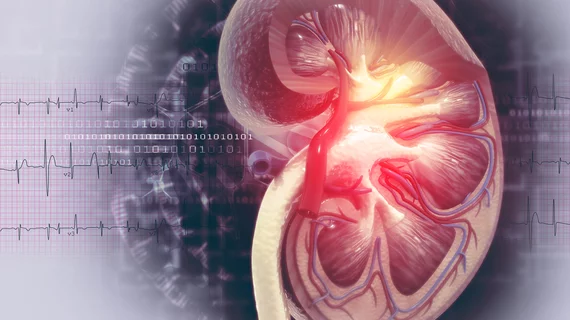HHS proposals aim to boost organ donation supply
HHS has issued a set of two proposed rules aimed at improving the availability of organs for the 113,000 Americans on waitlists for transplants. The proposed rules include financial help for potential living donors and new accountability rules for organ procurement organizations (OPOs). Most changes would take effect in 2022.
The proposals build off an executive order signed by President Trump in July, Executive Order on Advancing American Kidney Health, that aimed to improve kidney care in the U.S. by allowing more treatment options and other objectives to address the demand for kidney transplants.
“Our broken system of procuring organs and supporting kidney donors’ costs thousands of American lives each year,” HHS Secretary Alex Azar said in a statement. “President Trump sees kidney disease as a health challenge where we can make a major impact, and his Advancing American Kidney Health initiative, including today’s announcements, will transform the lives of American kidney patients, who have been neglected for too long.”
OPO changes
One proposed rule from CMS targets OPOs, which act as a link between organ donors and organ recipients by procuring organs from hospitals and delivering them to transplant centers. However, the basic certifications for participation in Medicare and CMS’ federal mandate to conduct inspections on OPOs are based on self-reported data from the OPOs, and the data measures were last overhauled in 2006.
The proposed rule would “hold OPOs accountable” and add incentives to actively collect donated organs and boost transplantation rates. The rule aims to incentivize OPOs to ensure all viable organs are transplanted, using objective and reliable data, as well as adding more oversight to these organizations.
“Many organ procurement organizations do wonderful work, but some aren’t performing nearly as well as they could,” Azar said. “We’re going to stop looking the other way while lives are lost and hold OPOs accountable. On living donations, we’re going to dramatically expand support for living kidney donors, so that Americans who wish to be generous living donors don’t face unnecessary financial barriers to doing so.”
Specifically, CMS proposes a donation rate measure of actual deceased donors as a percentage of the donor potential, defined as total inpatient deaths in the donation service area (DSA) among patients 75 years or younger who died from a cause that would not preclude them from donating an organ. The organ transplantation rate would be defined as the number of organs transplanted as a percentage of the donor potential.
CMS also proposes all OPOs meet the donation and transplantation rates of the current top 25% of OPOs, which would be made public under the rule. OPOs would have to meet the CMS requirements for the donation rate and transplantation rate measures every four years, or at the end of each re-certification cycle. CMS also wants to review OPO performance every 12 months throughout the re-certification cycle under the proposal to quickly identify those that need improvement and waste fewer viable organs.
The number of annual transplants would jump from 32,000 to 37,000 by 2026 if OPOs met the donation and transplantation rate, CMS estimated. That represents nearly 15,000 additional transplants over that time.
“… CMS is tackling this longstanding issue in the healthcare system by proposing decisive action to raise performance standards for organ procurement organizations and incentivizing them to facilitate transplant of as many viable organs as they can,” said CMS Administrator Seema Verma. “We are modernizing the organ transplant system so our sickest patients can receive the care they need. An imperfect organ is better than no organ at all. For someone on a waitlist, that may mean the difference between life and death.”
Living donor incentives
In addition, the Health Resources and Services Administration (HRSA) proposes removing the financial barriers to living organ donation. Specifically, the proposal increases expenses that can be reimbursed for living donors, such as lost wages, childcare and eldercare for donors who lack the financial support.
Doing so could boost the number of available living kidney donations. In fact, recipients of kidney transplants from living organ donors have better clinical outcomes than those on dialysis or those who receive a deceased donor kidney transplant. HRSA is also reviewing a notice to raise the income threshold for living donors eligible for reimbursements.
“Living organ donation is an important option for thousands of people on the national transplant waiting list,” said HRSA Administrator Tom Engels. “To date, approximately 96,000 individuals are on the national waiting list awaiting an available kidney. This proposed rule will increase living organ donation by removing financial disincentives for living organ donors.”
See the proposed rule from CMS here and the proposed rule from HRSA here.

